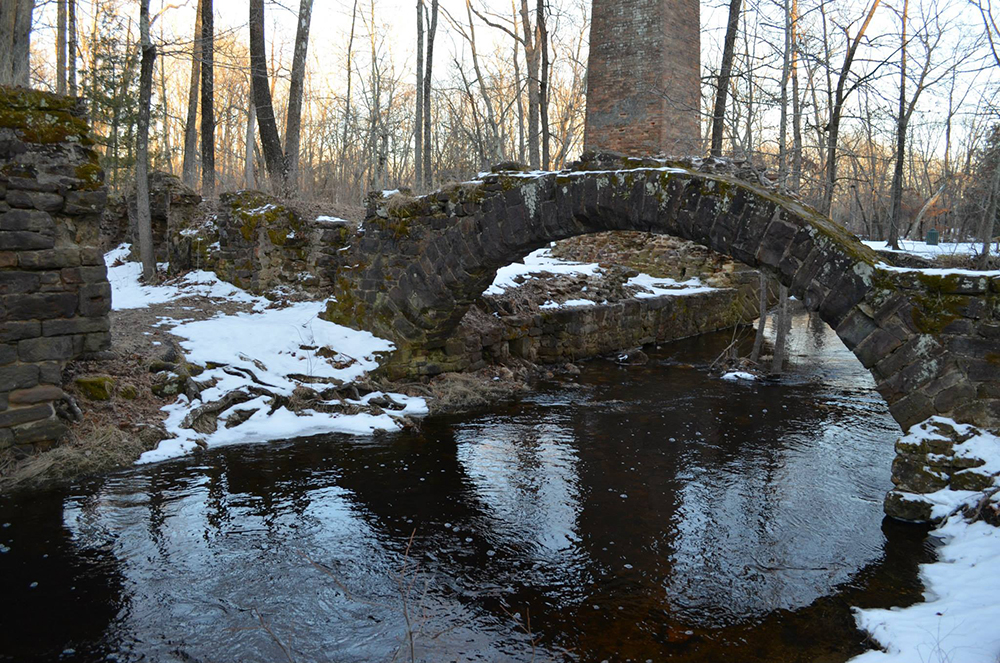By Steffen Klenk
Several months ago, during the peak of fall foliage, I discovered one of the most unique hidden gems in all of South Jersey… the Weymouth Furnace. Located off Route 322 in Hamilton Township, this 11-acre park is home to several walking paths, a picnic area, and is a starting point for canoeing, kayaking and tubing along the Great Egg Harbor River.
Once known as Weymouth Forge, the land was owned by West New Jersey Society until the year 1800, when the area was purchased by a partnership with George Ashbridge and Charles Shoemaker. In 1801, the state granted permission to dam the Great Egg Harbor River to accommodate iron works and other waterworks. One year later, iron production was well underway.
During the War of 1812, production shifted to the supplying of weapons for the United States. This included the production of cast cannons and cannonballs.
By the 1850s, the tract of land contained a forge, furnace, sawmill and gristmill. This area also had a Methodist church, a mansion for the owners, blacksmith shop, wheelwright, and up to 20 houses for workers. The forge was in production for nearly 60 years, with the iron produced smelted from local bog iron furnaces fueled by charcoal. Production at this facility mainly consisted of cast iron water pipes, but not limited to stoves, pipes and nails.
In the 1860s, the Weymouth Forge no longer could compete with updated coal powered forges in Pennsylvania. In 1862, the Forge was reportedly destroyed in a fire. By the later part of the decade, the land consisted of two paper mills. The Weymouth Paper Mill came to fruition in a wooden structure, while the Atlantic Paper Mill building was made of stone. Together, the two plants produced paper made out of manila rope, rags and old bagging. By the mid-1880s, wood pulp was primarily used to produce paper. Both mills went out of business in 1897.

By the 20th century, the land was sold and the site was left in disarray. The buildings that once stood on the thriving property began to collapse, and a brake in the dam caused the nearby mill pond to drain. Ultimately, the stone building became a victim for thieves and vandals. To this day, much information about this Pinelands community remains a long-lost mystery, leaving many to imagine what this area looked like more than two centuries ago.
While much of the Furnace has been erased from history, several remnants can be seen. The brick chimney and arches still stand to this day, while stone remnants from the paper mill remain fenced off. In 1966, Atlantic County acquired the land and re-opened the area as a public park. Today, the site is open to visitors as an attraction to walk, take pictures, and explore the last remains of this once versatile community.
The Great Egg Harbor River runs directly behind the furnace. It is important to note that swimming in this part of the river can be dangerous, with waters as deep as 20 feet in several locations. It is best advised to swim near lifeguards, in locations such as The Cove at Lake Lenape, which is open seasonally.














